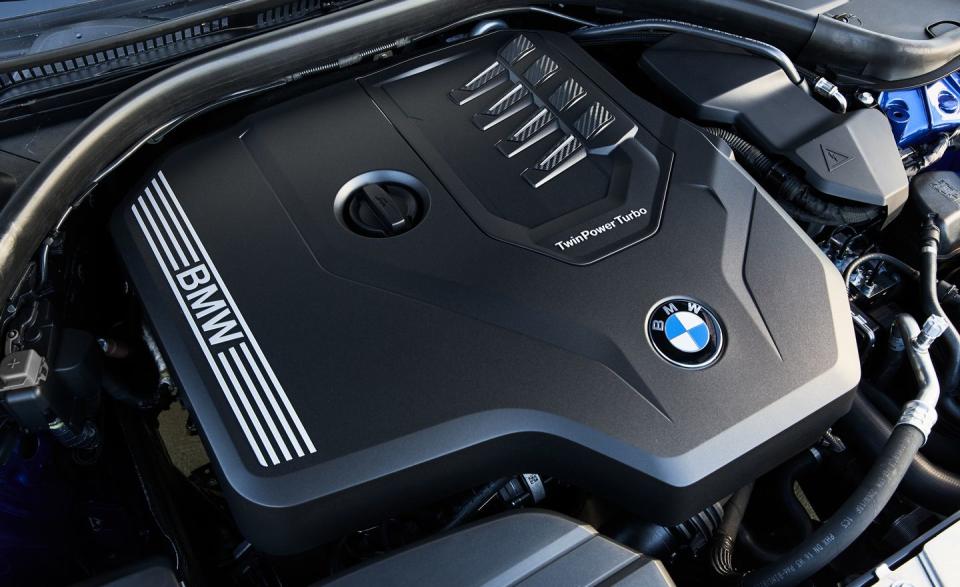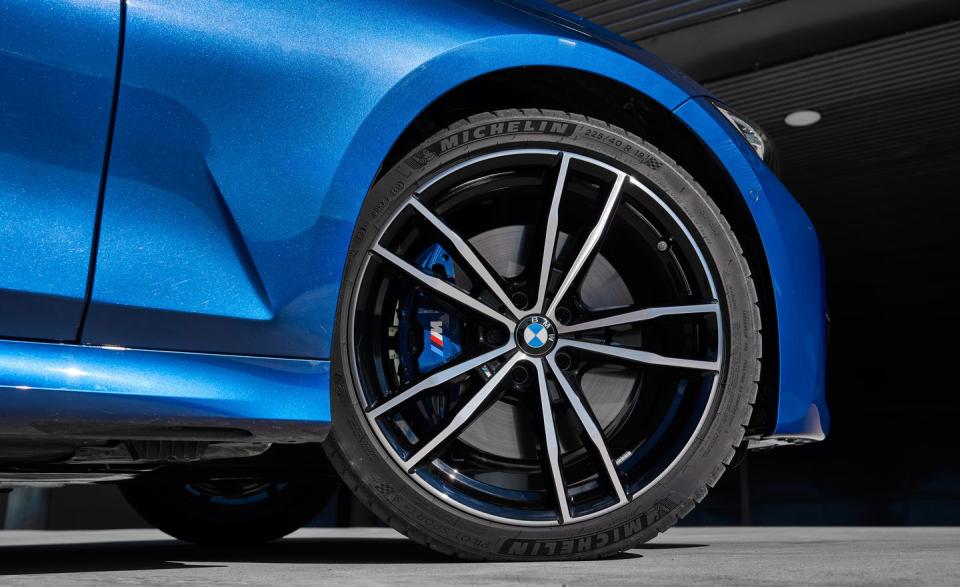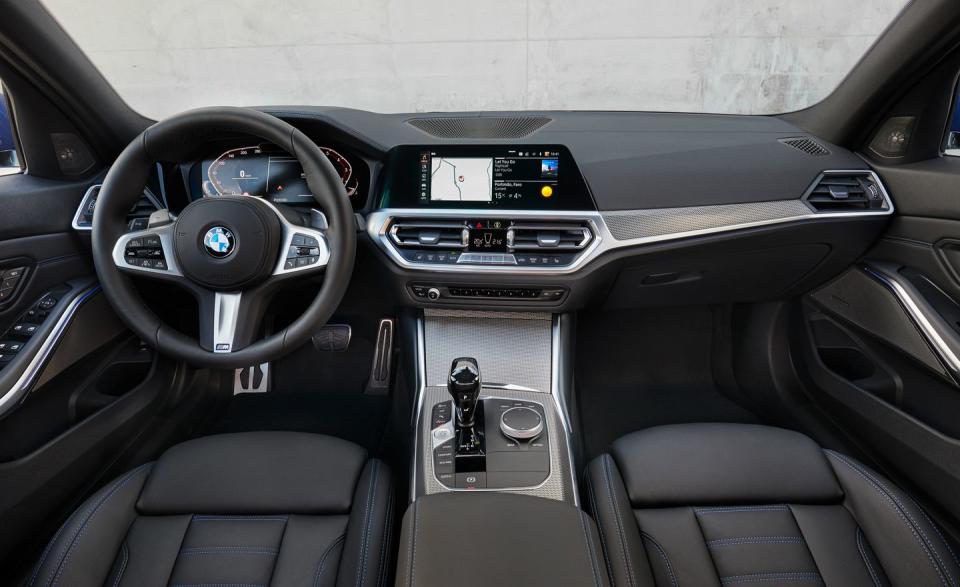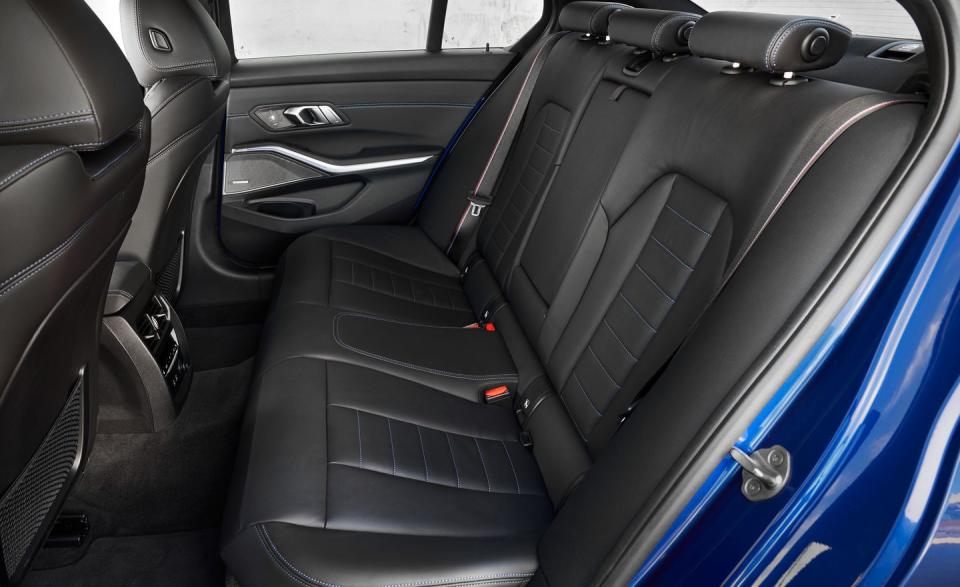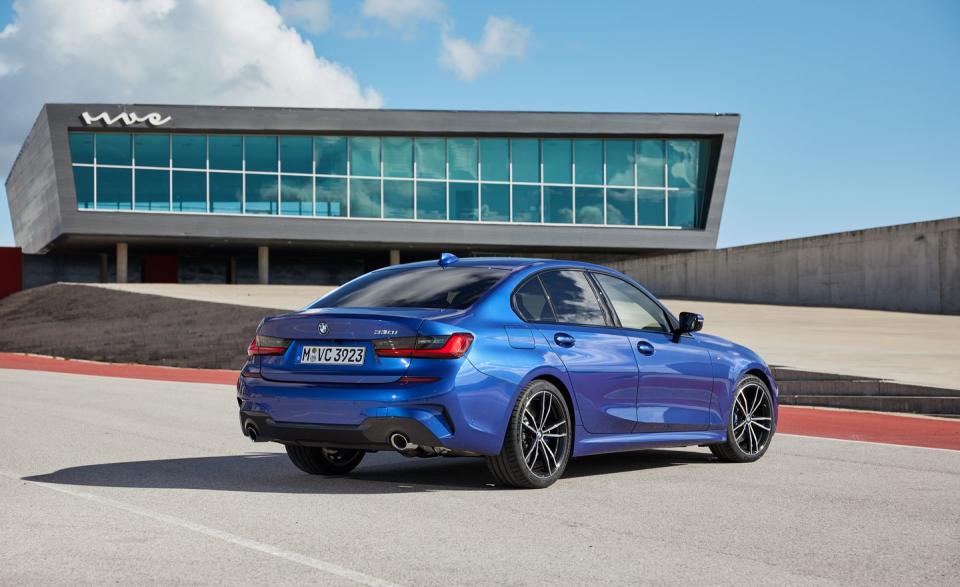The 2019 BMW 3-series: Back from the Brink
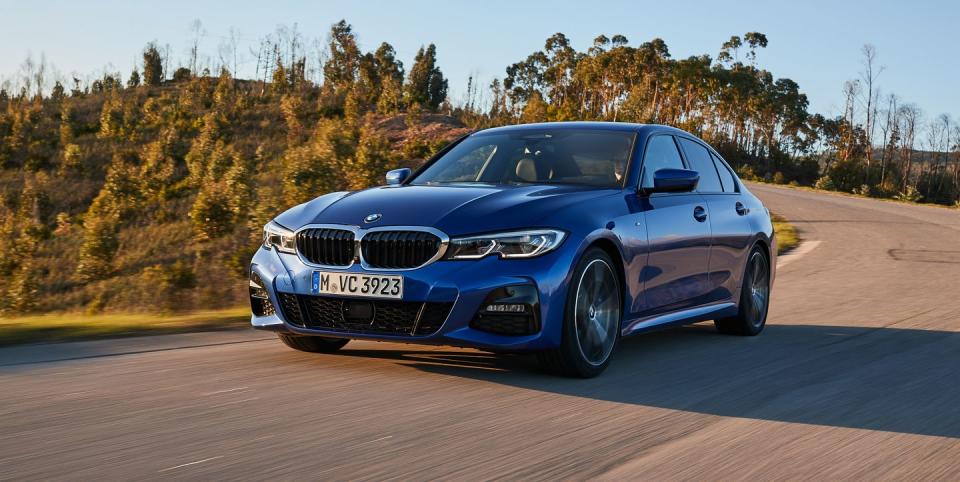
Turn 16, the last, longest, and fastest on the Algarve International Circuit in Portimão, Portugal, is a chassis engineer's nightmare, a driver's test, and an exercise in commitment in the new BMW M340i xDrive, currently the sportiest version of the new seventh generation of BMW's 3-series sedan. The blind crest early in the long right-hander is useful both for tuning the car and for assessing its composure at the limit. Nail the line, commit to the throttle before the rise, and the all-wheel-drive sedan rotates confidently when it lightens before settling into the compression at corner exit. Get it perfect, right foot pinned to the floor, and the M340i will carry a neutral attitude all the way onto the front straight. It's a delicate balance executed by a competent chassis and steering feel from this new 3-series that once again inspires confidence at speed.
A Lighter, Larger 3-series
We drove two versions of the new G20-generation 3-series in Portugal: rear-drive 330i models on the street and the M340i xDrive on the track. The Cluster Architecture (CLAR) platform undergirding both cars is stiffer, lighter-shaving 120 pounds over the previous-generation model, according to BMW-and, yes, larger than the car it replaces. It grows 1.6 inches in wheelbase and 3.0 inches in overall length, and it has a wider track both front and rear. Still, the priorities are right: Its center of gravity is lowered 0.4 inch relative to the outgoing F30 3-series.
Both the modest 255-hp four-cylinder 330i and the driver-focused, 382-hp inline-six–powered M340i offer class-competitive turbocharged powertrains with power gains of 7 and 62 horsepower, respectively, over the models they replace. Both demonstrated the composure we expect in the class thanks to a sincere effort by the chassis team and a genuine investment in hardware. The four-cylinder feels similar to most boosted 2.0-liter fours in this segment, offering adequate if uninspired power. Grunt comes early with this engine, but its high-rpm response doesn't encourage chasing the redline. It's certainly not slow, but its power delivery and sound make it more a tool than a toy. The six triggers deeper emotions. It's smoother and sounds better, and it makes the M340i a seriously quick thing. Both models are available with rear- or optional all-wheel drive, with the rear-drive M340i exclusive to the U.S. market. This is no knock to ZF, but its ubiquitous and effective eight-speed automatic is regrettably the only transmission choice.
Chassis Changes for Better Handling
Among the new hard parts is an electronically controlled limited-slip differential. It's bundled with 19-inch wheels (with summer tires on rear-drive models and all-season rubber on xDrive versions) and a variable-ratio steering rack in the Sport package ($5000) on the 330i; that equipment is standard on all M340i models. But the bits that seem to matter most, the ones primarily responsible for a controlled chassis when pushed and a comfortable one otherwise, are the new position-sensitive dampers-hydraulic-stop dampers, in BMW-speak-which come on both the base car and those with the Sport package. The dampers use a tapered inner tube (on the compression stroke in the rear and on the rebound stroke in the front) to increase damping force by 50 percent. Adaptive dampers are optional on either version and were installed on the M340i xDrive models we drove on the track. But their presence isn't required for excellent dynamics.
As with our previous experience in a prototype version of the new 3, our blast through Portugal's inland back roads proved the bandwidth of the passive suspension in the Sport-package-equipped 330i. The outside wheels absorbed small but sharp midcorner bumps at committed speeds without upsetting the chassis, a sign of not only an effective spring/damper combination but also sufficient travel on the Sport-package cars, which sit 0.4 inch lower than the base models and have springs that are 20 percent stiffer and firmer anti-roll bars. But most important, the limits are defined both by neutral handling and a helm that imbues a driver with confidence. Sport-package-equipped 330i models (and every M340i) come with 13.7-inch front rotors matched to four-piston fixed calipers, a combination that, on the road, proved impervious to fade.
The 330i's steering feel, at speed and with Sport mode selected, is useful in prudently sensing the front tires' relationship with the tarmac. Push hard and there's a substantive answer through the variable-ratio rack that simply isn't present in Comfort mode. This, says Jos van As, BMW's vice president of driving dynamics, is a product of multiple changes in the model's steering and suspension as well as the stiffer chassis. In Sport mode, the power-steering system's assistance is reduced relative to the previous 3-series, allowing just the right amount of kickback and surface acknowledgment to reach the driver's hands. Caster is increased to produce greater self-centering torque. Though the 3's steering is always accurate, those who drive with purpose will appreciate the added information and modestly increased effort available in Sport mode.
Inside, the design is updated but familiar in its relatively Spartan presentation. When equipped, BMW's Live Cockpit Professional adds a 12.3-inch display in which a clockwise-sweeping speedometer and counterclockwise tachometer define the outer edges of the instrument cluster. A 10.3-inch infotainment screen is also included. Otherwise, base cars get 5.7-inch and 8.8-inch screens. A large head-up display projects all manner of information-speed, speed limits, route instructions and navigation data, warning indicators, and more-onto the windshield, and there's no readily available means to disable it. Dedicated buttons for the most used features of the HVAC and audio controls reside below the infotainment screen. The center console has buttons for the driving modes, engine start, and other functions as well as a large iDrive knob flanking the shifter. It's a clean, usable design, but neither the materials nor the presentation flatter the 3's status as an entry-luxury car. Mazda currently offers interiors that are more striking and equally easy to use.
Say "Hey, BMW" for Personal Assistance-Sometimes
But only Mercedes, with its MBUX system, offers a personal-assistant feature similar to what BMW debuts in this 3-series. Called the BMW Intelligent Personal Assistant, the feature responds to voice prompts preceded by the words "Hey, BMW," or it will-sometimes reluctantly-accept whatever name you give it. But its comprehension is often poor, and it was unresponsive to our repeated attempts to communicate using common language. When we did finally summon its attention, the assistant was able to tell us the distance to a large nearby city and to confirm that the engine oil level was okay, a command BMW provided as an example in the system's demonstration. Overall, though, the tech felt supremely unprepared for production. Few experiences are more frustrating than talking to a machine that refuses to respond. Typically, our hearing-impaired mother-in-law's presence is required for such indignities.
But really, that's all that is wrong inside the 3-series. The front seats are both supportive and attractive, and there's more space than inside the previous car. Six-footers will fit comfortably in the outboard rear seats, and the standard rear seatback is now 40/20/40 split.
And, of course, there's no shortage of tech. The optional Driving Assistant Professional combines the functions of the available adaptive cruise control and the steering and lane-keeping assist. Even without the system enabled, the lane-keeping feature takes its share of liberties if it senses the car is too close to the lane's edge, which can be annoying. A new Back-Up Assistant will retrace the 3's path in reverse for up to 50 yards to aid in complex backing maneuvers.
Pricing and Arrival Times
Pricing for the 2019 330i is the same as the 2018 model at $41,245, while the 2020 M340i starts at $54,995, roughly $2500 more than the old 340i equipped with the Track Handling package and summer tires. Adding xDrive to either model ups the tab by $2000. Expect the 2019 330i to be in dealerships in March 2019, with the M340i, a 2020 model, arriving in the summer. A 330e plug-in hybrid will follow in 2020, but there are no current plans to bring a diesel-powered 3-series or a wagon to the United States.
That BMW has executed the perfect sports sedan remains to be seen. That it has made a vast improvement over the outgoing 3-series is without doubt.
('You Might Also Like',)

 Yahoo Autos
Yahoo Autos 